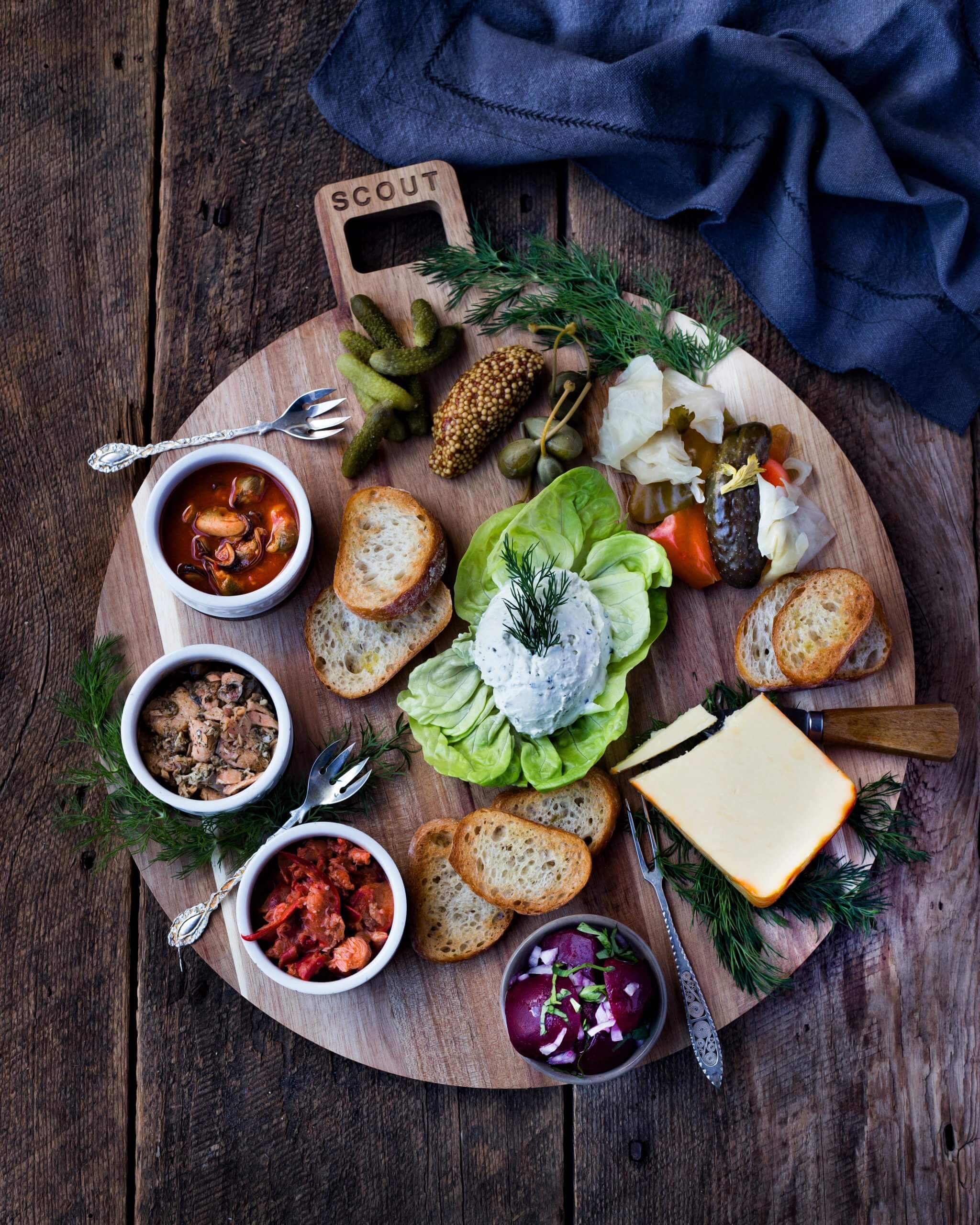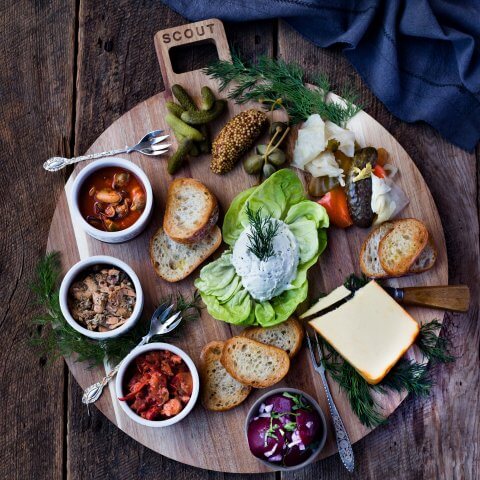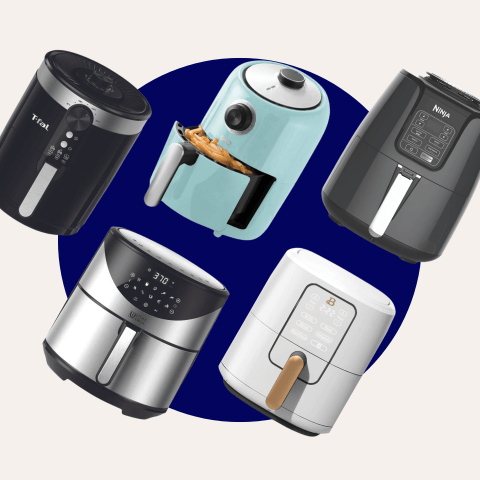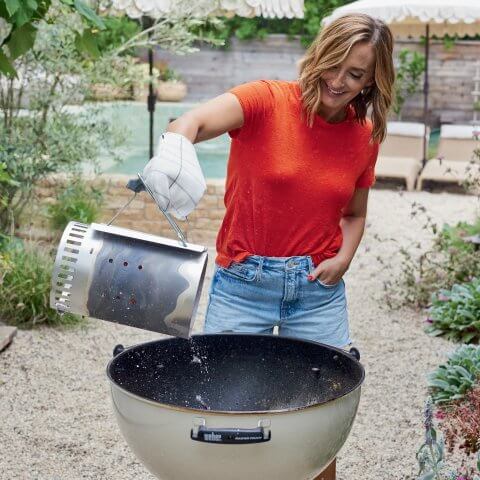There once was a time when canneries were a staple in coastal fishing communities across North America. Local fishermen would bring their seasonal catch to be preserved with salt, smoke and time, much like a fine cut of cured meat, or the process of aging cheese. The vision behind Scout began in 2014 when Chef Charlotte Langley, a Prince Edward Islander, had a passion to inspire the home chef to enjoy crafted, responsible seafood by elevating this time-honoured tradition of seafood canning for the modern home cook. From a confit of lobster in butter with fresh herbs, to slow-smoked seasonal peppers for a subtle, smokey mussel, to the perfect ratio of fresh dill, dill seed and crunchy sea salt, all of Scout’s seafood features handcrafted flavours come straight from Chef Charlotte’s heart.
But, before we talk about how to build a seacuterie board, first things first: did Chef Charlotte Langley, Chief Culinary Officer of Scout Canning, invent the idea (and name) of a ‘seacuterie’ board? “You know what? I think I did,” she says with satisfaction. “Everyone was all, ‘charcuterie!’ And I was like, what about seacuterie? We even tried to trademark that name, but that stuff’s billions of dollars. It’s not really reasonable. You know what I’m talking about!”
In fairness, ‘seacuterie’ may be a billion-dollar idea. In a world filled with cheese and charcuterie – and now, butter – boards, what’s left for the sociable seafoodie to snack on? Chef Charlotte’s answer is an arrangement anchored by three of Scout’s sustainably-sourced gourmet seafood cans: PEI Mussels in a tomato-fennel sauce, Ontario Trout with Dill and Atlantic Canadian Lobster with Lemon. An arrangement of endive petals, persimmon, and seaweed snacks (naturally) finishes off Charlotte’s artful displays. Artful, by the way, is used here in the literal sense: when Langley is entertaining, she arranges her seacuterie board with a technique inspired by Van Gogh starting with the heavy and dark colours on the bottom, finished off with the lighter and brighter colours closer to the beholder’s eye.
It doesn’t need to look perfect to be delicious, Charlotte says. Her approach to cooking is all about investment. “The more we respect the product and make it beautiful, the happier it’s gonna be, and it always becomes a better experience,” she says. “So just take it easy and enjoy the process.”
Creating your own seacuterie board is turnkey if you have Scout Market’s Holiday Seacuterie Board Bundle. Perfect for the sustainable snacker, Chef Charlotte Langley’s curated ‘Seacuterie’ bundle includes a 3-pack of Scout fan favourites, a chic acacia wood serving board, oyster shucker, stoneware bowls and 4 cheese tools.
How to assemble a pescatarian board
Materials
- 1 tin Scout Dilled Trout
- 1 tin Scout Lobster with Lemon
- 1 tin Scout Mussels with Smoked Paprika and Tomato
- 2 endives separated into petals
- 2 persimmon
- ⅔ cup olives of your choice
- 2 packages Toasted seaweed snacks
- 2-3 types firm cheeses, such as piave or aged cheddars
- 2 lemons cut into wedges
- 1-2 packages crackers, potato chips or flatbread
Instructions
- Crack each tin of Scout into its own small bowl
- Place cheeses as your anchor on the board
- Portion persimmon, endive and place around the cheeses
- Cluster olives to balance out the cheeses
- Garnish with crackers, chips, seaweed snacks and serve

















